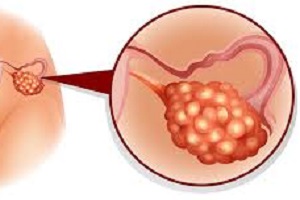By Setareh Kiumarsi
Have you been diagnosed with cysts, fibroids, or polyps in your reproductive system? Has your uterine lining thickened? Are your ovaries sluggish?
Have your menstrual cycles become shorter and more frequent? Is your period blood thick and clotted, or do you have prolonged spotting before or after menstruation?
In Ayurveda, these issues arise from an imbalance in the Kapha dosha. Simply put, when the reproductive system becomes overly moist, excess dampness or “bad phlegm” makes the environment sticky. Over time, this sticky phlegm accumulates and turns into lumps such as cysts, fibroids, or polyps.
One of the major sources of these sticky lumps is the food we eat. When we constantly consume sticky, mucous-forming, and hard-to-digest foods, our digestive tract fills up with toxic phlegm. This phlegm packs its bags, leaves the digestive tract, and heads for organs that are genetically weak or weakened by previous illnesses. There, it settles and eventually forms masses, cysts, fibroids, and so on.
What should we do?
We must be mindful of how much moist food we eat and how we consume it, to prevent our digestive and reproductive systems from being overloaded with harmful phlegm.
Dietary Restrictions
Which foods are the most mucous-forming and hard to digest?
- Refined white flour is very heavy, hard to digest, and fattening. Reduce products made from white flour (such as white flour bread, pasta, biscuits, cakes, etc.) and replace them with whole grain, multigrain, or gluten-free alternatives.
- Be cautious with sweets, especially those containing sugar (cookies, cakes, ice cream, desserts). Most sweets (except honey, apples, pears, and beets) are very moist and phlegm-forming. Avoid excessive intake of dates, figs, bananas, melons, grapes, and cantaloupe. Eliminate refined sugar and use light natural sweeteners like honey, apple syrup, mulberry syrup, or maple syrup.
- Cook rice using the straining method, with balancing spices like turmeric, saffron, cumin, cinnamon, and coriander seeds. Prepare it as a herbed rice dish with finely chopped fresh greens like spinach, parsley, basil, leeks, or cilantro.
- Cow dairy (milk, cheese, yogurt, cream, butter, etc.) is very fatty and phlegm-forming. Eliminate it from your diet and use lighter alternatives like goat or camel dairy, or vegan options like almond or coconut milk.
- Completely avoid desserts and sweets made with white flour, sugar, and dairy.
- Limit consumption of beef, veal, pork, fried foods, industrial oils, fast food, processed foods, canned items, ready-made meals, chocolate, puffed snacks, large servings of rice (more than 5–6 spoonfuls per meal), mushrooms, very sour foods (fruit rolls, sour plums, pickles, etc.), and heavy nuts like peanuts and cashews.
- Drink a digestive herbal tea every hour starting two hours after each main meal. Also, drink a glass of digestive lassi with lunch and dinner.
- Make fiber-rich vegetables like parsley, basil, garden cress, savory, carrots, spinach, beets, and so on, a non-negotiable part of your diet. Their dryness acts like a sponge to absorb excess moisture in your gut. Always include digestive salad or fresh herbs like parsley, basil, cress, and spinach with your meals.
- Use warming digestive spices generously in your cooking: saffron, turmeric, fennel, cumin, black seed, fresh ginger, cinnamon, thyme, and rosemary.
- Keep dinner light. Avoid eating bread, rice, cheese, and yogurt at night. The best dinner option is steamed vegetables or a digestive salad.
Abdominal Oil Massage
If you have ovarian cysts, fibroids, polyps, endometriosis, thickened uterine lining, sluggish ovaries, sticky/clotted period blood, frequent menstruation, or prolonged spotting:
A weekly abdominal oil massage with the following blend helps reduce symptoms and detox the reproductive system:
3–4 times a week, massage your lower back, sides, navel, lower abdomen, and ovaries using equal parts of:
- Castor oil
- Black seed oil
- Bitter almond oil
Use circular, clockwise motions for 5–10 minutes.
If you live outside Iran and can’t access these oils, you can use Kapha Massage Oil by Banyan Botanicals.
After the massage, sit in a warm bath or sitz bath for 10–15 minutes. If you don’t have a tub, fill a basin with warm water and sit in it under a warm shower.
Wishing you radiant health.
Please be sure to credit the author, Setareh Kiumarsi, when sharing or republishing this article, which was written with love and the hope of well-being for all.







